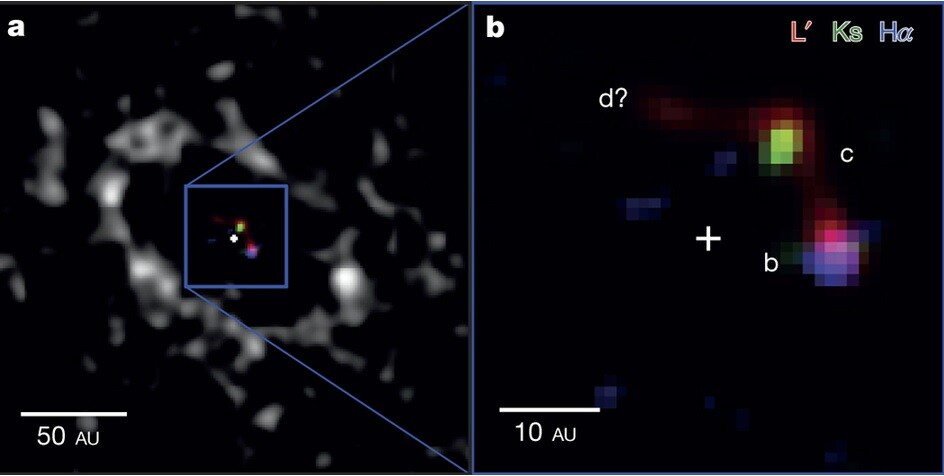Of the many new exoplanets discovered over the past two decades, all have been identified as established, older planets. Some with incredible winds raging across their surface and others that may be able to support life because of their position in the habitable zone, but none have been acknowledged as newly-forming protoplanets. Now scientists working at the Keck observatory have spied just such a planet in the constellation of Taurus, some 450 light-years from Earth, that is only just beginning its life, collecting matter and spinning into a brand new world.
The plant is circling a star dubbed LkCa 15 and was discovered by astronomers Adam Kraus and Michael Ireland using the Keck II telescope. Named LkCa 15b, and in orbit in a system with two other planets (aptly named LkCa 15c and LkCa 15d), the protoplanet's star has been observed with an unusual accretion disk that has a gap in it. This fact leads the astronomers to conclude that a planet is solidifying inside the disk, accreting dust and debris to add to its mass.
"Our new observations support that view. We are just now being able to image objects that are close to and much fainter than a nearby star," said team member Stephanie Sallum, a Ph.D. student in astronomy at the University of Arizona, and lead author of the research. "That's because of astronomers at the University of Arizona (UA) who have developed the instruments and techniques that make that difficult observation possible."

And the instruments that make these amazingly detailed observations possible include the Large Binocular Telescope, or LBT – the world's largest telescope, located on Arizona's Mount Graham – and the University of Arizona's Magellan Telescope and its Adaptive Optics System, MagAO, located in Chile. Fitted with a range of cutting-edge instruments to enhance and clarify such incredibly distant images, these instruments produce particularly impressive results, especially given their Earth-bound positions.
"When you look through the Earth's atmosphere, what you're seeing is cold and hot air mixing in a turbulent way that makes stars shimmer," said team member Professor Close of the University of Arizona. "To a big telescope, it's a fairly dramatic thing; you see a horrible looking image."
The images have been made possible specifically because the Large Binocular Telescope was purpose-built using a novel imaging technique to overcome these atmospheric distortions, and that the MagAO instrument was able to capture the spectral fingerprint emitted at a specific wavelength of light that LkCa 15 and its planets emit as they grow.
"This is the first time we've imaged a planet that is definitely still in the process of forming," said Professor Peter Tuthill from the School of Physics at the University of Sydney, and another contributing team member. "The difficulty had been that when you have indirect evidence, there are always alternate explanations that might fit the data."
This new discovery could prove invaluable to astronomers studying how many trillions of tiny particles of dust can accrete to form massive planets, given that much of the mechanics prior to this observation were largely based on hypotheses and guesswork.
The results of this research were recently published in the journal Nature.
The images can be seen in the video below.
Source: University of Sydney





